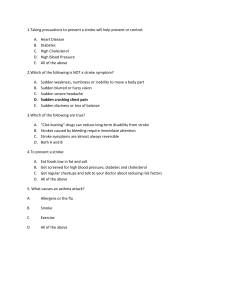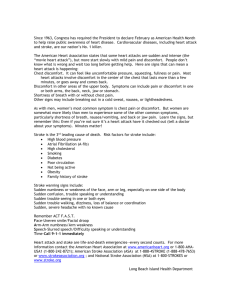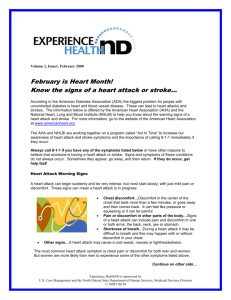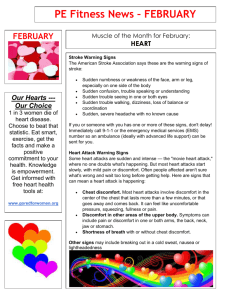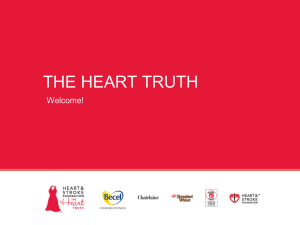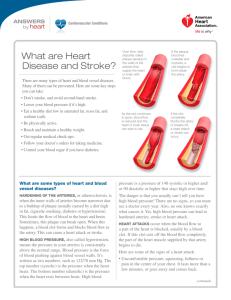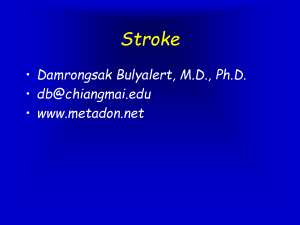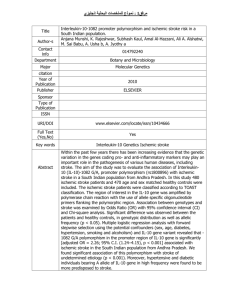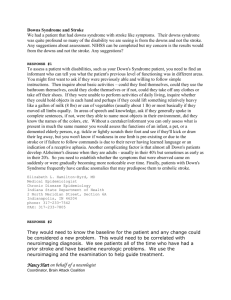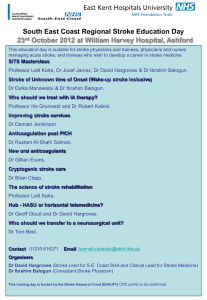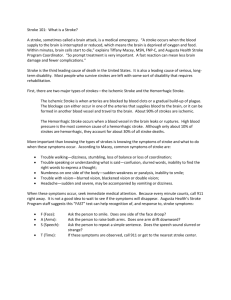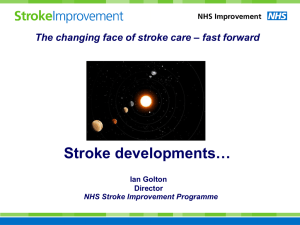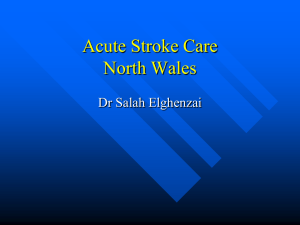Stroke Game Show PowerPoint
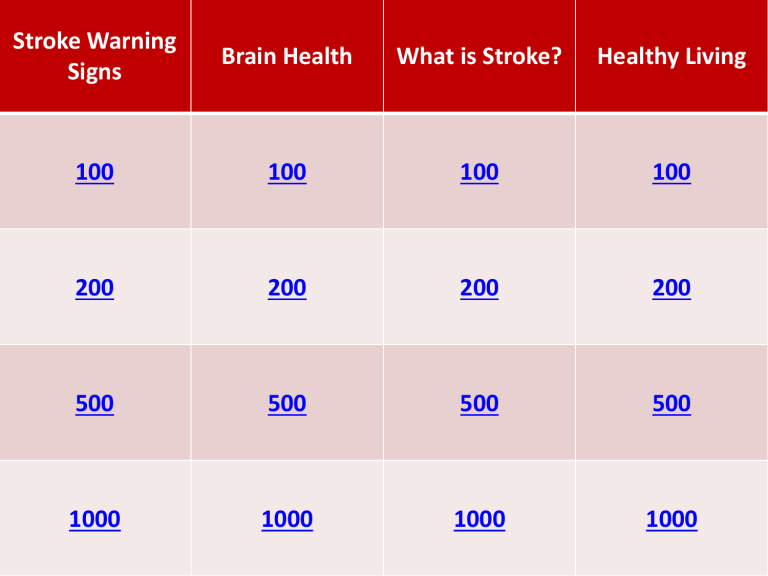
Stroke Warning
Signs
Brain Health What is Stroke?
Healthy Living
An acronym used to describe stroke symptoms
A description of what F.A.S.T. stands for
The two steps you must take immediately once you spot a stroke
3 examples of “sudden” warning signs
Percentage of strokes that are preventable
The leading cause of stroke
3 things you can do to improve your brain health
3 things that cannot be changed that can affect your brain health
The organ where a stroke occurs
The age range in which someone can have a stroke
2 types of stroke
3 effects of stroke
Some things that are good for your brain (e.g. physical activity and eating healthy) are also good for this major organ
3 examples of foods you can eat to improve your overall health
3 examples of health issues that can result from unhealthy behaviors (such as smoking and poor diet)
3 examples of life’s
Simple 7 (things you can do to improve your overall health)
ANSWER KEY
• Warning Signs
100: What is F.A.S.T.?
200: What is Face Drooping, Arm Weakness, Speech Difficulty,
Time to call 911?
500: What are 1. Call 911 2. Check the time that you noticed the symptoms?
1000: (Students can choose 3 of the 5) What are 1. Sudden numbness or weakness of the leg 2. Sudden confusion or trouble understanding 3. Sudden trouble seeing in one or both eyes 4. Sudden trouble walking, dizziness, loss of balance or coordination 5. Sudden severe headache with no known cause?
• Risk
100: What is 80%?
200: What is high blood pressure?
500: (Students can choose 3 of the 5) What are 1.
Reduce high blood pressure 2. Reduce high cholesterol
3. Stop smoking 4. Increase physical activity 5. Healthy diet?
1000: (Students can choose 3 of the 5) What are 1.
Age 2. Race 3. Gender 4. Heredity 5. Prior stroke, TIA, heart attack?
• What is Stroke?
100: What is the brain?
200: What is any age?
500: (Students can choose 2 of the 3) What are 1.
Hemorrhagic 2. Ischemic 3. Transient Ischemic?
1000: (Students can choose 3 of the 5) What are 1.
Vision problems 2. Paralysis 3. Memory loss 4. Slow, cautious behavioral style 5. Quick, inquisitive behavior?
• Healthy Living
100: What is the heart?
200: (Students can choose 3 of the 5) What are 1. Fruits 2.
Vegetables 3. Fish 4. Dairy 5. Whole-grain, high-fiber foods
6. Beans 7. Lean meats?
500: (Students can choose 3 of the 5) What are 1. Stroke
2. Heart Disease 3. Type 2 Diabetes 4. High blood pressure
5. High cholesterol 6. Cancer?
1000: (Students can choose 3 of the 5) What are 1. Get
Active 2. Eat Better 3. Control Cholesterol 4. Manage Blood
Pressure 5. Lose Weight 6. Reduce Blood Sugar 7. Stop smoking?
